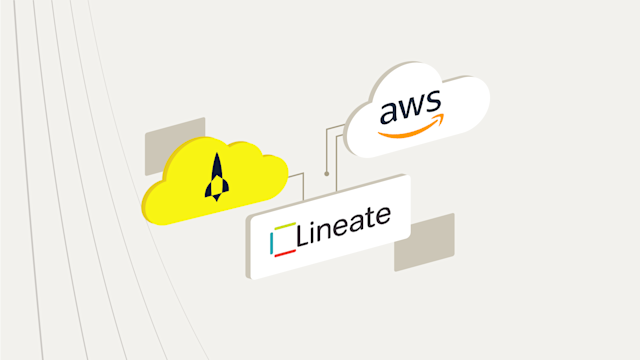What are retail media networks?
Explore how retail media networks are transforming advertising with AI-powered insights, real-time data, and supply chain integration, driving engagement, efficiency, and growth.
Retail media networks (RMNs) are digital advertising platforms owned and operated by retailers that allow brands to promote their products directly to consumers using the retailer’s first-party data. By leveraging the insights generated from both online and in-store shopping behaviors, retailers can offer advertisers the ability to serve targeted ads at key moments in the shopper journey, often at or near the point of purchase.
RMNs represent a unique convergence of e-commerce, digital advertising, and retail by allowing brands to advertise through multiple touchpoints, including a retailer’s website, mobile app, and even physical stores. This setup is different from traditional digital advertising, as retailers are not just selling products but also offering their platform as an advertising space where brands can reach highly relevant audiences.
The importance of retail media networks
As digital transformation reshapes the retail landscape, retail media networks (RMNs) have emerged as one of the most transformative forces within the advertising industry. At their core, RMNs allow retailers to leverage the vast amounts of first-party data they collect from their customers, turning their digital and physical platforms into highly efficient advertising spaces. These networks give brands unprecedented access to advertisers looking to target consumers at the most critical junctures of the shopping journey—whether on an e-commerce platform, a mobile app, or even a physical store.
With retailers expected to play a more dominant role as ad platforms, RMNs are positioned to reach a projected $50 billion in ad spending by 2025. This shift is not only redefining the way brands advertise but also transforming retailers into powerful media players. Retailers are no longer just product sellers—they are evolving into comprehensive advertising platforms equipped with cutting-edge advertising technology to help brands optimize their campaigns.
In this rapidly growing sector, retail media networks offer a new level of control over targeted advertising. They allow brands to deliver personalized ads directly to consumers when they are closest to making a purchasing decision.
As noted in the Harvard Business Review, retailers like Walmart and Amazon have taken this transformation to new heights, turning their platforms into powerful media networks that can compete with the biggest players in the digital advertising space. These companies have leveraged their deep understanding of consumer behavior and rich data ecosystems to offer brands sophisticated advertising solutions that tie directly to commerce media and retail media ads.
Benefits of retail media networks
Retail media networks offer a multitude of benefits for both retailers and brands, transforming how advertising campaigns are run and measured. By utilizing retailers' first-party data, RMNs provide an unprecedented opportunity for brands to target highly relevant consumers at the exact moment they are ready to make a purchase, whether in-store or online.
Direct brand-to-consumer advertising
Retailers' first-party data allows brands to target audiences at the most impactful moments, driving higher conversion rates through targeted advertising and ad placement in both digital and physical ad spaces.
Closed-loop attribution
RMNs enable brands to track the customer journey from ad exposure to POS purchase, allowing precise advertising campaign optimization by leveraging advertising platforms like Walmart Connect or Albertsons Media Collective.
Advanced data analytics
Retailers and brands leverage AI-driven recommendations and real-time feedback to continuously optimize ad placements, programmatic advertising, product offers, and inventory management. The use of advertising space and ad inventory within retail media advertising ensures brands can maximize ROI.
Higher ROI with targeted ads
RMNs allow brands to serve targeted advertising to specific audience segments based on their purchase history, browsing behavior, and real-time activity. This ability to display relevant ads at the point of purchase significantly improves conversion rates and maximizes ad revenue. Retail media advertising enables advertisers to fine-tune their campaigns, delivering a higher return on investment (ROI) compared to traditional advertising channels.
Leveraging first-party data
One of the most critical assets in the modern advertising landscape is data. Retailers have a direct line to shopper data, such as purchase patterns and browsing habits, which allows advertisers to create personalized ads that speak directly to a target audience. This depth of insight into consumer behavior empowers brands to create more meaningful campaigns and optimize their ad placements.
Seamless integration of digital and physical channels
By integrating online and offline data streams, RMNs connect digital advertising efforts with in-store behaviors. Retailers can track how digital campaigns lead to in-store foot traffic, and brands can measure the effectiveness of their ad placement across digital and media channels, ensuring consistency across platforms and providing a holistic view of campaign performance.
Inventory management and supply chain optimization
RMNs contribute to smarter supply chain decisions by linking real-time purchase data with inventory management systems. Retailers can make better-informed decisions about restocking and adjusting inventory based on campaign demand, preventing stockouts and ensuring advertisers maintain full visibility into product availability.
Retail media technology
To drive the next generation of retail media networks, several critical technologies and processes must work in harmony:
Deep linking and campaign attribution
Retailers need to tie digital interactions to physical outcomes. By leveraging deep links (both basic and deferred), we can connect advertising campaigns directly to app product pages and attribute user actions like installs, purchases, and in-store visits back to the original advertising platform.
Universal product codes (UPCs)
UPCs are key to linking products across the entire supply chain. From ad exposure to real-time POS purchases, UPCs provide a universal identifier that retailers and brands can use to track product performance, optimize inventory, and gain insights into how specific advertising campaigns drive sales.
Real-time POS integration
To fully attribute online and offline sales to specific advertising campaigns, RMNs integrate POS data with digital ad interactions. When a user engages with a campaign and later makes a purchase—whether online or in-store—this system provides a closed-loop solution for measuring campaign ROI and adjusting strategy in real time.
Recommendation engine
At the heart of RMNs is an advanced recommendation engine powered by collaborative filtering, content-based filtering, and semantic search. This hybrid model can recommend products to consumers based on past behavior, product attributes (like UPC data), and the semantic meaning behind their queries (e.g., searching for “comfortable shoes for long-distance running”). By analyzing real-time data, the system continuously optimizes ad placements and product recommendations based on user intent, purchase history, and supply chain visibility.
Supply chain visibility
By tying real-time purchase data to supply chain systems, retailers can avoid stockouts, optimize inventory levels, and ensure product availability. RMNs play a critical role here by providing actionable insights from POS data that trigger inventory restocking and operational decisions. This integration ensures that brands can maintain effective advertising space while meeting consumer demand.
Semantic search in retail media
Semantic search enables the recommendation system to understand the context and intent behind consumer behavior, moving beyond keyword matching. By embedding product descriptions, attributes, and customer reviews into semantic vectors, the system matches user queries with relevant ads and personalized ads based on meaning. This approach greatly enhances the accuracy of product recommendations, personalizing the online shopping experience and driving conversions. As part of retail media networks, semantic search plays a pivotal role in helping advertisers connect with their target audience by delivering more tailored content, thus increasing brand awareness and ad revenue.
The role of semantic search in RMNs
As retail media networks continue to grow in importance, semantic search plays an increasingly critical role in how advertisers reach their target audience. By using semantic search algorithms, RMNs can analyze user queries, historical behavior, and contextual factors to deliver ads that are not only more accurate but also more engaging. This capability allows advertisers to serve content that is highly relevant to the consumer, increasing both brand awareness and the likelihood of conversion. The Harvard Business Review also highlights the rise of retailers as ad platforms, showcasing the value of tools like semantic search in transforming how brands and advertisers engage with their customers.
For example, when advertisers utilize Walmart Connect or Amazon Advertising, semantic search helps link consumer queries to products that are not just relevant but are also available based on factors like inventory, pricing, and past purchase history. This level of granularity ensures that advertisers are maximizing their ad placements and reaching the right customers at the right time, ultimately leading to more effective retail media advertising campaigns.
Boosting brand visibility and ad revenue
By better understanding consumer behavior, semantic search enhances the accuracy of campaign attribution by linking user intent to final purchases. This not only improves the effectiveness of ad placements but also allows retailers and brands to optimize their advertising campaigns based on real-time feedback. The ability to track consumer behavior from initial ad exposure to purchase gives advertisers a full view of how their campaigns are performing, enabling them to make data-driven adjustments that increase both ad revenue and ROI.
Additionally, semantic search can help brands improve their brand awareness by delivering relevant ads that speak directly to a consumer’s specific needs or preferences. This personalized approach not only increases the likelihood of a sale but also fosters a deeper connection between the brand and the consumer, leading to longer-term customer loyalty. In fact, semantic search helps transform ad experiences into tailored product recommendations, positioning retail media networks as highly effective advertising platforms capable of delivering both value to the consumer and profitability for the brand.
Driving future trends in retail media
As the capabilities of semantic search continue to evolve, its impact on retail media advertising is likely to grow. The technology is already helping retailers and advertisers bridge the gap between online and offline consumer behavior, offering a more cohesive view of the customer journey. Future advancements in artificial intelligence (AI) and natural language processing (NLP) will likely further enhance the precision of semantic search, making ad placement even more strategic and driving the overall growth of retail media networks.
Retail media network data and tech stack
Below is a diagram illustrating how data flows across the retail media ecosystem, from user interaction and recommendation engines to campaign attribution and supply chain feedback, showcasing the seamless integration of advertisers and ad platforms within this structure.
Tech stack components:
User interaction and data pipeline:
Collects real-time user interactions from various sources: website, mobile app, physical store, and POS.
Links consumer behavior and user engagement to product data (via UPCs) and campaign metadata, allowing advertisers to refine advertising campaigns based on target audience insights.
Recommendation engine:
Powered by collaborative filtering, content-based filtering, and semantic search.
Uses shopper preferences, product attributes (e.g., UPC, category), and natural language understanding to generate personalized ads and relevant ads that enhance the brand awareness of products.
These recommendations help optimize ad placements within retail media networks, improving overall ad revenue.
Campaign attribution:
Ties POS purchases and consumer behavior back to the original advertising campaigns within the retail media network.
Provides real-time feedback on campaign performance and ROI, allowing brands and retailers to optimize advertising space and ad inventory for future campaigns.
Supply chain integration:
Feeds product purchase data (from POS) into inventory and supply chain systems, ensuring real-time visibility into demand.
Triggers restocking or adjustments based on real-time demand insights gathered from retail media advertising performance.
Data analytics and reporting:
Tracks the entire user journey, from ad exposure to purchase, linking advertising campaigns with digital channels and media channels.
Generates insights for retailers and brands on product performance, consumer behavior, and campaign success, helping to drive strategic decisions in digital marketing and programmatic advertising.
Next steps
The exponential growth of retail media networks is reshaping the advertising landscape, offering retailers and brands new, data-driven ways to engage with consumers and drive business outcomes. By harnessing the power of real-time data, semantic search, recommendation engines, and POS integration, RMNs enable precise campaign attribution, deliver personalized shopping experiences, and optimize inventory management based on real-time consumer demand. These advancements allow for a seamless connection between advertising and operational efficiency, leading to higher ROI and improved customer satisfaction.
As the industry continues to evolve, the role of AI-powered insights and supply chain visibility will become even more critical to success. Platforms that can process vast amounts of real-time data and provide instant insights, such as Aerospike, will be key to driving this transformation. With Aerospike’s capabilities in vector search and real-time AI, retailers and advertisers can not only optimize ad placements but also ensure that their systems can scale to meet the increasing demands of personalized advertising and inventory synchronization.
To learn more about how Aerospike is supporting this new wave of AI-driven advertising and supply chain efficiency, check out this resource on real-time AI insights or explore how vector search is revolutionizing recommendation engines here.
As retail media networks continue to scale, companies that embrace these cutting-edge technologies will be better positioned to capitalize on emerging trends, connect more effectively with their target audiences, and drive long-term growth.




